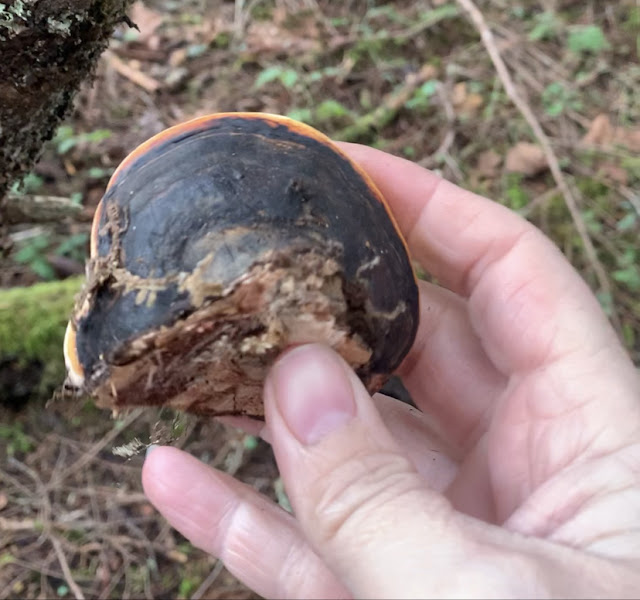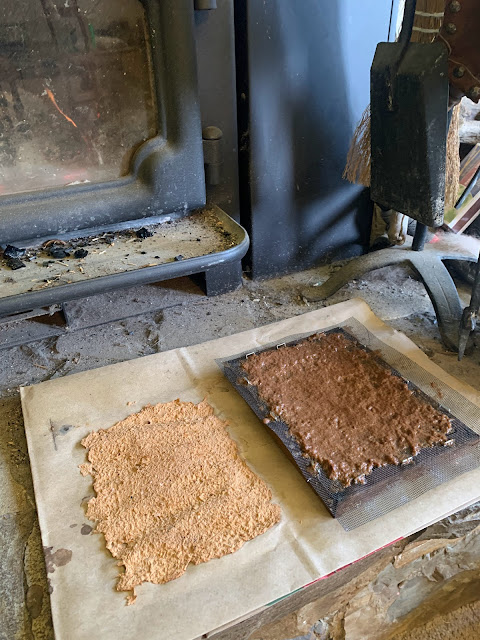Good Morning! It's been ages since I've updated, but I've made some fun discoveries from my kitchen conceptions that I'd love to share with you! I don't want you to have to wade through a lot of fluff so I'll just jump right in today with my method for mushroom paper!
Red-banded polypore are abundant in the PNW (but please, always use sustainable foraging practices!), although from my research, I understand that most bracket fungi work wonderfully as a paper! I usually find them on the sides on dead, standing fir, but sometimes on larger downed trees. The young ones pop off pretty easily, but I've had to use a mushroom knife older varieties. This small one was easily harvested and relatively easy to dice.
Once I got it in and rinsed of excess dirt, I spent a minute shaving off a bit of the black topside. I didn't get everything, but I was looking for minimal variance in the color of my paper. I diced the remaining conch and poured boiling water over it, letting it set until cool with the goal of loosening up the fibers.
After the soak. I ended up refreshing this waster before blending, since I wanted as light of a color as possible without bleaching.
I found giving it a shake only made the material bunch up together, so I had to carefully pat even by hand.
Drying on a paper bag in front of the fire. Hm, it's a little lumpy, so I simmered the remaining for about a half hour.
I should mention that I tried a few ways of drying: on the screen, on the bag, and pressed between the two, at least until I could easily get the screen off.
Page #2 dried, held up in front of the fire. Much more consistent and even thinner than the first! I thought about trimming the edges, but I kind of like the look as they are.
I got three pages out of that little polypore, plus enough pulp in the freezer (trying to break it down even further) for a couple more! Next, to see how it takes to ink! Mushroom ink, naturally! =)
Thank you all for reading through! Below are links to more resources on the topic:
"The Organic Artist" by Nick Neddo: https://www.nickneddo.com/shop/the-organic-artist-book
Mother Earth News article on mushroom paper and ink making: https://www.motherearthnews.com/diy/how-to-make-mushroom-paper-and-ink-ze0z11905zwoo
Fungi Perfecti's article on mushroom paper making: https://fungi.com/blogs/articles/making-mushroom-paper














